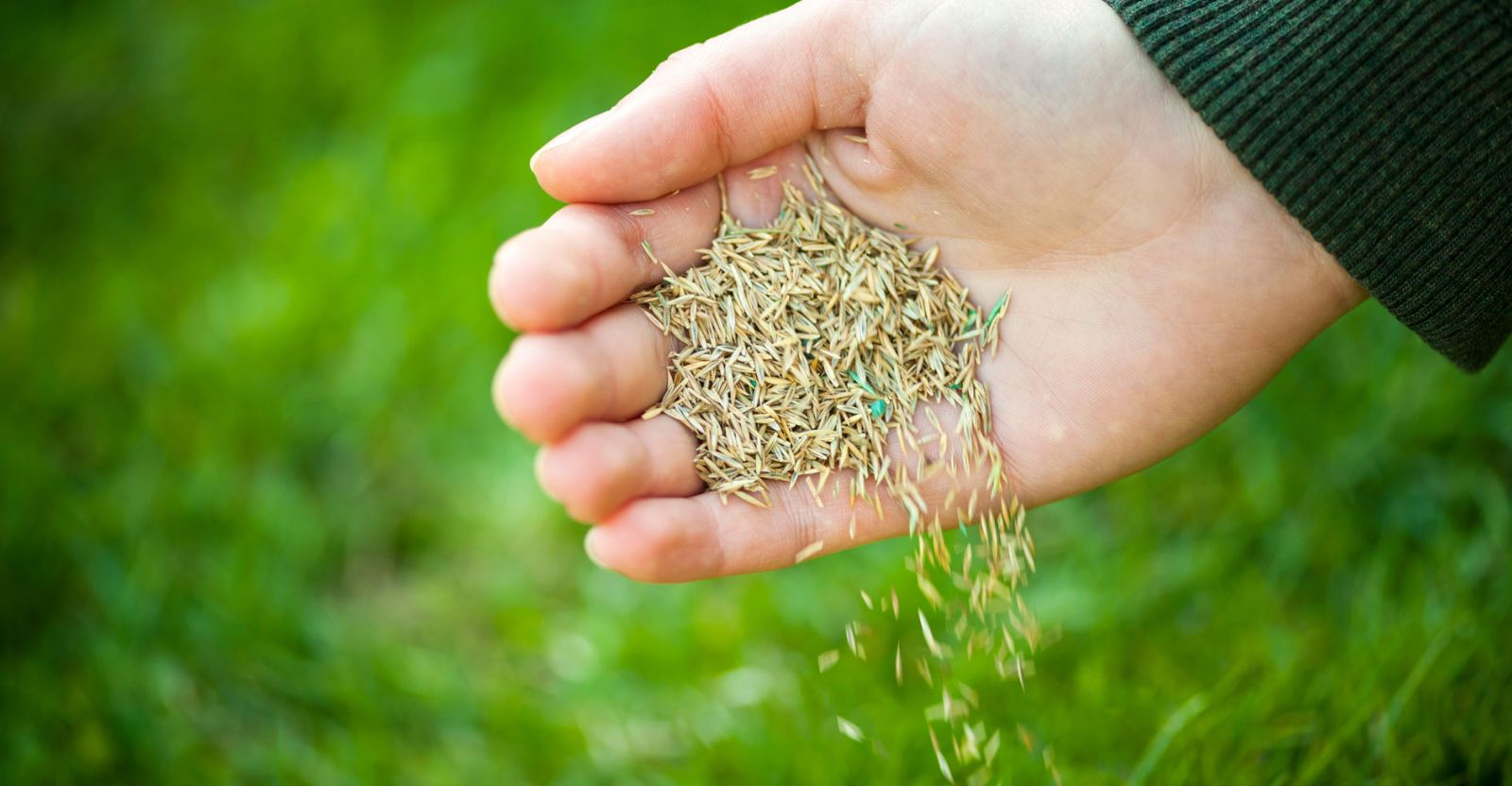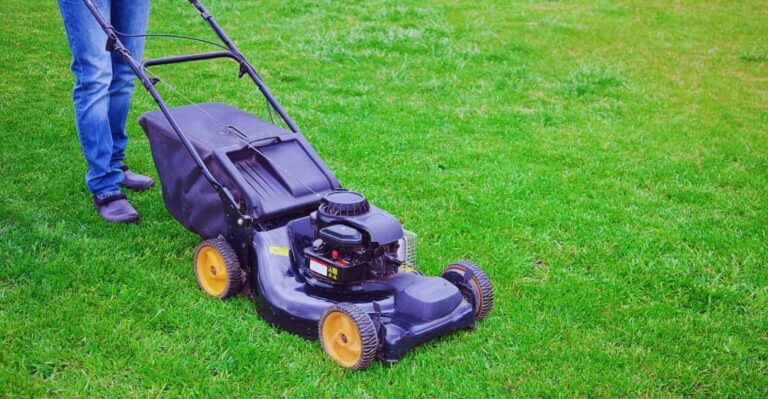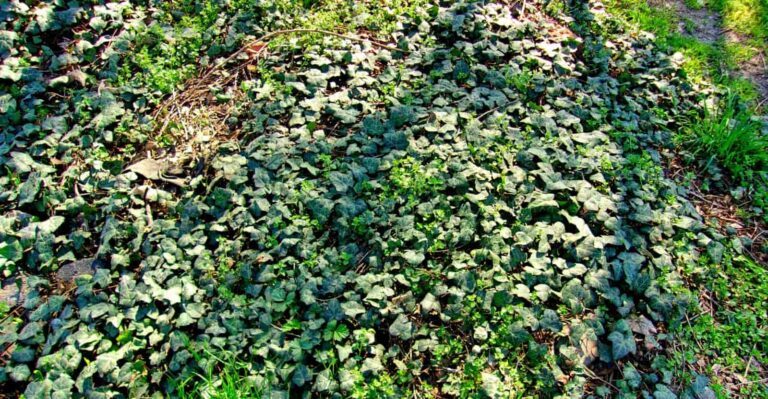Amazon has put together some great Home Gift Deals – save money and get your shopping done at the comfort of your home! Click here to see deals on Amazon
If you have a lawn that has lots of bare spots, thinning and weeds propping up everywhere, you’ll likely want to overseed.
Overseeding is a low-cost and straightforward way to revitalize a tired or patchy lawn. It gives you a head start on the growing season, so you don’t have to worry about dealing with an unhealthy and patchy-looking yard in a few weeks.
In this handy guide, we have covered in-depth when and how to overseed a lawn. This helps you fix any worn and patchy-looking lawn back to a lush green thicker lawn.
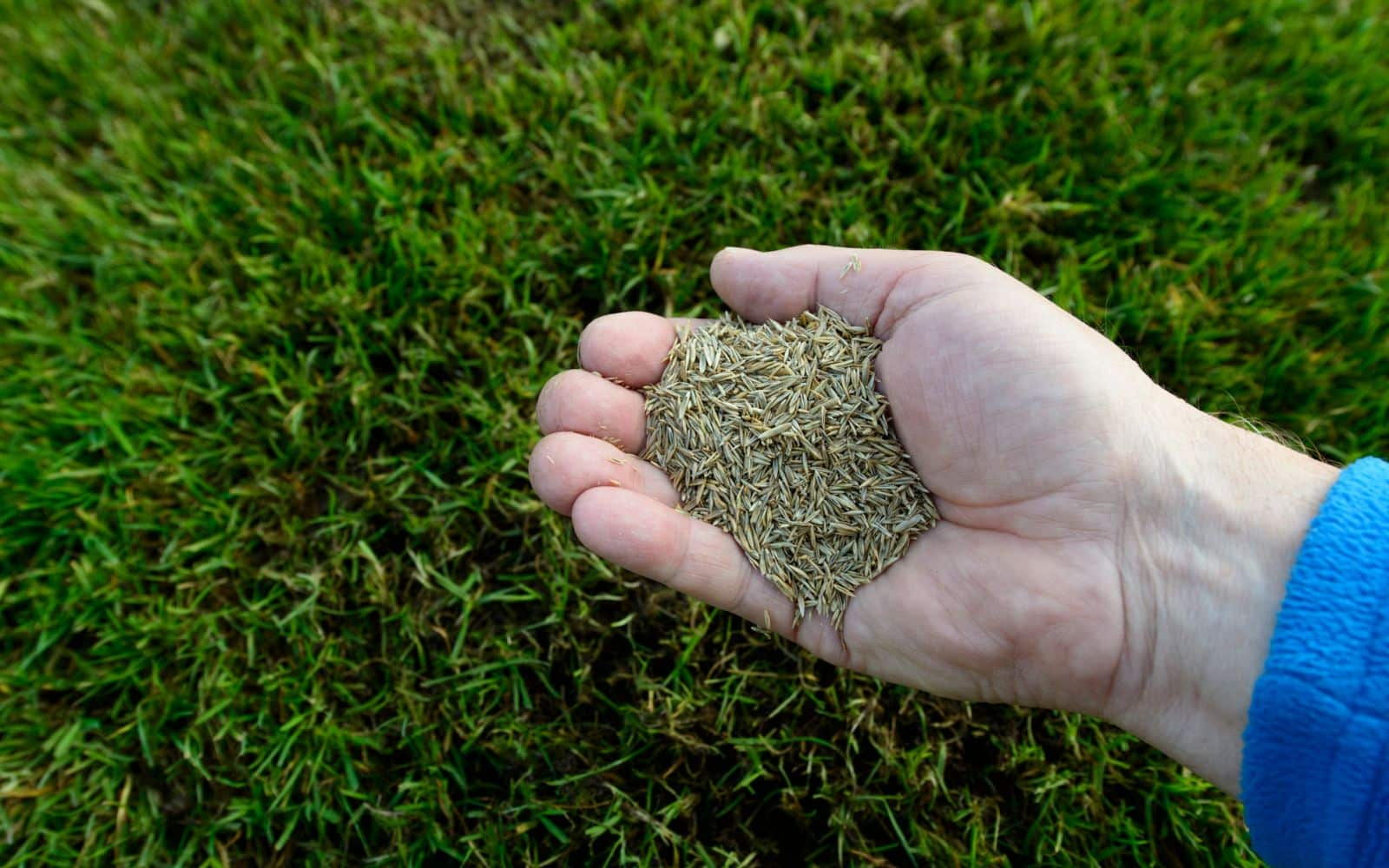
What is overseeding?
Overseeding is a lawn care technique to spread grass seeds over an existing lawn to fill in bare or thinned-out yard spots. It helps thicken the grass in the thin areas, and you get back the lush, full green appearance of a vibrant lawn.
When you overseed your yard, you take the desirable seeds and spread them over the existing lawn.
It helps keep your lawn healthy and vigor without needing to start over from scratch. This is a great way to add more color to your yard with thicker and denser grass.
Why are overseeding lawns necessary?
It’s common for lawn grass to become thin or have dry patches on them due to weather, high foot traffic, or kids and pets playing in the yard. The thin and patchy yard doesn’t have a nice fuller appearance and invites weed seed in the lawn.
Overseeding lets you fill in bare spots while improving the grass quality with better varieties. It also saves time and effort in maintaining a lawn.
If there is more than 40% damage to your lawn, the overseeding may not help, and it’s better to do the full lawn renovation. However, it’s helpful in restoring lawn if you have lost less than 40% of grass.
Moreover, overseeding helps to replace mature and worn-out grass with healthier and younger turfs. A grass blade has a 45 to 60 days life cycle, and it continuously produces a new tiller to replace the older grass blade.
With overseeding, you have more young grass to produce tiller at a higher rate than the older grass. You should also understand the difference between overseeding and reseeding that many people use interchangeably.
Reseeding is primarily to replace the lost grass and cover up the dead grass. Whereas the primary purpose of overseeding is to thicken the lawn and be proactively remedy or stay ahead of thinning grass problems.
What types of grass seeds are best for overseeding?
When it comes to overseeding, you can choose warm-season or cool-season grass type, depending on the area you live in.
You should select different grass variety seeds that spread via rhizomes as it sends shoots upward, and their roots spread horizontally. This helps it quickly cover the bare spots in the entire lawn.
Here are some turfgrass varieties to use:
Bluegrass seed
You can combine bluegrass seed with tall or coarse turf-type fescue lawn seeds such as Kentucky Tall Fescue or Alta. Check out what turf-type you already have on your lawn and use the same variety with your existing property.
Fine fescue seed
There are different varieties of fine-fescue grass seed, such as creeping red fescue, sheep fescue, chewing fescue, and hard fescue, sold primarily as shade grass.
Don’t use these where the lawn gets exposed to full sunlight, but use these for shade grass. These blends nicely with other grass types and should be mixed with different seed varieties.
Ryegrass seed
Perennial ryegrass should be used as a seed mixture for lawn overseeding. It blends well with bermudagrass lawns but doesn’t perform well in extreme heat or cold temperatures.
Keep an eye if the seed has a blend of annual and perennial ryegrass in the new grass seed mixture. Annual ryegrass germinates earlier than others to provide a quick cover crop, while perennial ryegrass takes its time to grow.
Note:
Lawn seeds germinate with a single grass blade. The grass crowns have roots growing down and spreading horizontally. The new grass blades known as tillers shoot up with their own crown and roots to coverup the area. The grass has to produce new tillers continuously, or the yard looks thin out.
Cool season grass seed
These seeds remain green in cool weather. You can use bermudagrass, ryegrass, and turf-type tall fescue for seeding.
You should avoid using Kentucky 31 tall fescue or other coarse turf grass to overseed existing permanent lawn as these don’t blend well.
Warm season grass seed
Warm-season grass seeds thrive best in temperatures between 75 to 90-degree Fahrenheit. Bermuda grass, zoysia grass, bahiagrass, and St. Augustine are some warm-season grasses varieties.
These seeds are usually smaller than cold season seeds, and sometimes it may become difficult to spread. You can mix it with sand to quickly seed with a spreader or do it manually.
Tall fescue seeds
The tall-fescue grass seeds can be used on different soil types and climatic conditions for lawn care. These can tolerate higher temperatures, drought, and weather that makes them suitable to cover warm-season grasses.
You can use these to overseed around full sunlight or partially shaded areas.
Most grasses germinate at the temperature of 60 to 80 degrees Fahrenheit. Don’t overseed when the weather is below freezing or frost is expected.

Should you aerate your lawn before seeding?
It’s not necessary to aerate your lawn before seeding, but aeration helps reduce soil compaction and creates a more favorable condition for seeds to germinate.
Moreover, aeration also removes a layer of thatch from the lawn and removes any debris. This helps seeds to grow faster and better. You should consider aerating heavy foot traffic areas of the yard as often the soils get compacted here.
How do you prepare your lawn for aeration and overseeding?
A core aerator is a great tool to prepare the yard for seeding quickly. It pulls out approximately one-half inch wide and three inches long grass and soil plug from the yard.
This relives the soil compaction and allows the air to pass to the grassroots. You can make a couple of passes in different directions to properly aerate the lawn.
You can leave the plug on the surface to break down naturally in a few weeks. Lightly water yard before aeration to soften the ground as it makes the job easier.
For a small to medium size yard, you can choose a non-motorized or manual lawn aerator. But for the bigger yard, choose a motorized core aerator that can help get the job done more quickly.
Don’t be confused with core aeration to spike aeration. The spike aeration simply pokes holes in the ground but doesn’t remove any soil plugs.
If not done correctly, it may increase the soil compaction, which isn’t suitable for seeding. You can consider dethatching to pull out any dead grass or overgrown roots.
When is the best time for an overseeding lawn?
The best time to overseed a lawn is in late summer or early fall. During this time, soil and climate are most suitable to help with seed germination and growth. Seedlings need the right moisture, temperature, sunlight, and fertilizer to grow that is available during these times.
Cool-season grasses: If you live in a relatively cold climate, fall is the best time to overseed your lawn.
If you have mature trees on your property, they shed their leaves at this time, allowing more sunlight to reach the ground. If you missed the fall seeding, you could do it in early spring when the frost has passed.
Warm Season grasses: For people living on a warmer Southside, the best time is late spring to mid-summer. You can use warm-season grass seeds such as crabgrass and nutsedge at this time.
You shouldn’t forget to lightly water these warm-season grasses such as Bermuda, Zoysia, St. Augustine, and Centipede. It helps them to get established quickly before the dry and hot weather sets in.
The Turfgrass Water Conservation Alliance recommends overseeding 45 days before the first frost. You should wait to overseed until the night temperature drops below 65 °F and the grass begins to lose color.
The overseeding time also depends on your climate or regions, and choose seeds that complement the existing grass. You can check USDA Plant Hardiness Zone Map to help you choose the right grass seeds type.
How do you prepare the soil for grass seed?
Preparing soil for grass seed is vital to increase the chance of seeds to germinate and get established. You should consider the current state of the soil and for any recurring problem of grass. You should also test the soil.
The test helps you determine any deficiency in the soil and make any required corrections before overseeding.
You want the soil pH to be at a level of 6.2 to 7 to have a successful seeding. You can amend soil using a pH controller solution to get a greener and healthier lawn.
You can also add compost, lime, and wood to raise the pH level of acidic soil or use sulfur to increase alkaline soil’s acidity. The aeration also helps with the nutrient distribution and airflow to the roots of the grass.
How much grass seed do you need to overseed?
The overseeding grass need depends on the bald patch areas and grass thinning in the yard. You need to maintain the right balance of spreading seed. Too much or too little may crowd the grass or not be sufficient to get the desired density.
As a general guideline, you should use 3 lbs to 4 lbs of seeds per 1,000 sq feet of your yard. If you have several dry patches and thinned spots, you can slightly overseed and over 8 lbs to 10 lbs per 1,000 sq ft. You can reduce this amount by 50% depending on lawn condition.
You must follow a proper watering schedule after overseeding to let the seeds germinate. You can repeat the process to cover any leftover bald or thin patched area for a uniform look at your grass.
It’s vital to remember that a higher quality seed yields stronger and healthier growth. You should always use seeds suitable for your regional climate and use a reputable seed vendor to buy healthy seeds.
How do you overseed an existing lawn?
Follow these steps on how to overseed a lawn.
Step 1: Mow the lawn
Before you start, use a lawnmower to mow 1/3 of the grass length. Rake any grass clippings so seeds can easily reach the thin lawn soil surface.
A good soil contact of seed is vital for it to germinate properly. Remove any dirt or debris from the soil and keep the ground free from rocks.
Step 2: Amend the soil
Amending your soil creates the best foundation for the seeds to grow.
You can rake in a quarter-inch of enriched soil to help the seed to settle in. Adding soil-enhancing gypsum helps with soil conditioning that encourages grassroots growth.
Step 3: Spread the seed
You can use a grass seed spreader or do it manually to spread seed in your lawn.
When using a spreader, follow the direction to set the seed release lever to get uniform distribution over the lawn.
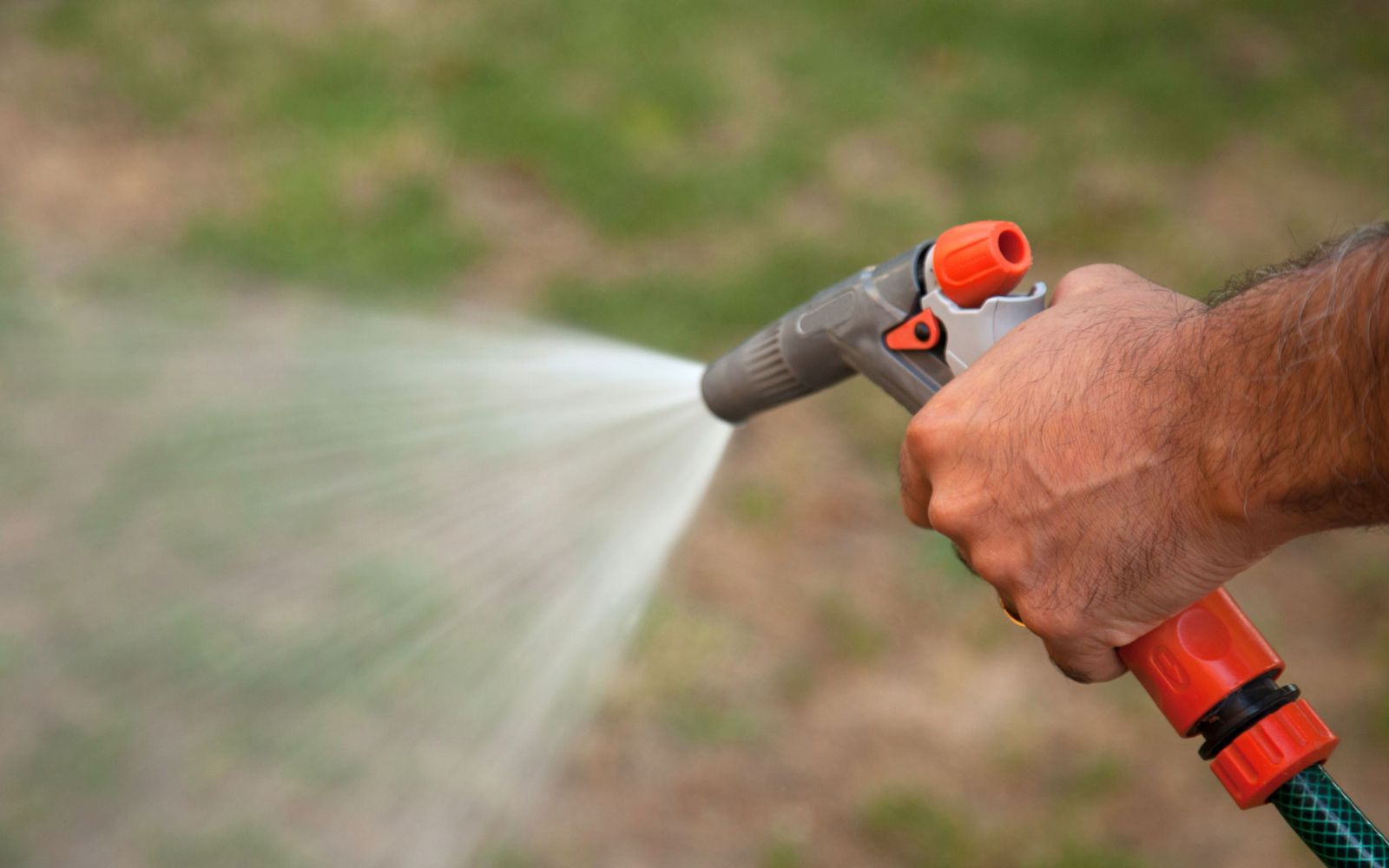
Step 4: Water your lawn
You have to regularly water the lawn and keep stable soil moisture for seeds to germinate. You can lightly water the overseeded area twice a day for the first weekdays and water heavily every other day.
After the first two to three weeks, you can reduce the watering frequency and water when the ground starts to get dry. You should be careful when overwatering and don’t soak the soil or increase the root rot risk.
Step 5: Use lawn fertilizer
Fertilization helps provide necessary nutrients for the seed to germinate. You can use starter fertilizer rich in phosphorous to grow strong grassroots and nitrogen, which helps with growth and greening.
You can also use natural fertilizer such as compost to spread a quarter to half-inch on top of the seed. It helps cover the seed and prevents birds and other insects from feeding on seeds.
You should fertilize your lawn about six weeks after seeding and then repeat it every six weeks with a fertilizer spreader.
Also, don’t overfertilize the Kentucky bluegrass as it can get diseased if overfertilized. Infrequent and limited fertilization is the best when overseeding with bluegrass. Scotts Turf builder is a great 3 in 1 lawn fertilizer that you can use on your lawn.
How long after overseeding can you walk on grass?
You should wait for 8 to 10 weeks after seeding to start walking on the grass. The seeds germination takes some time, and stepping on a newly germinated seed destroys the grass crowns.
Remember that you’re not creating a new lawn when you overseed but filling in bare spots and damaged areas in the yard.
It may be tempting to start using your lawn after a few days, but you will then destroy the fragile new seedlings. For example, fescue and ryegrass usually take about two weeks to germinate.
Can you mow after overseeding your lawn?
Overseeding is a great way to revitalize your lawn, but you should wait to mow for the first time after seeding until the grass has grown about a quarter-inch tall.
This helps prevent mowing down any seeds in your lawn. Ideally, you should wait 8 to 10 days after seeding to get started with your regular mowing schedule. The grass usually grows 3 to 4 inches tall and becomes ready to be mowed in those days.
What happens if you plant grass seed too late?
If you plant grass seed too late, it can become challenging to germinate successfully to establish a healthy lawn.
Seeding too late in fall may cause the seed to become dormant and won’t grow until late spring. You may also lose some healthy grass seeds to frostbites that won’t germinate.
You may have some leeway if you’re overseeding with cool-season seed. But you should spread it when the temperature isn’t below frost and lay it in the daytime when the air temperature is between 60 to 75 degrees Fahrenheit.
What next
Now, as you know, overseed lawns are a great way to maintain a healthy and lush green yard. It helps lawns recover from damage caused by heavy foot traffic, heat, and lack of care. Properly overseeded lawn lets you fill bare sports and improve the lawn appearance.
You should also follow the steps we covered under how to overseed a lawn instruction to give seeds the optimal growth condition. You can also check out our post on how to prevent birds from grass seeds to avoid losing seeds.
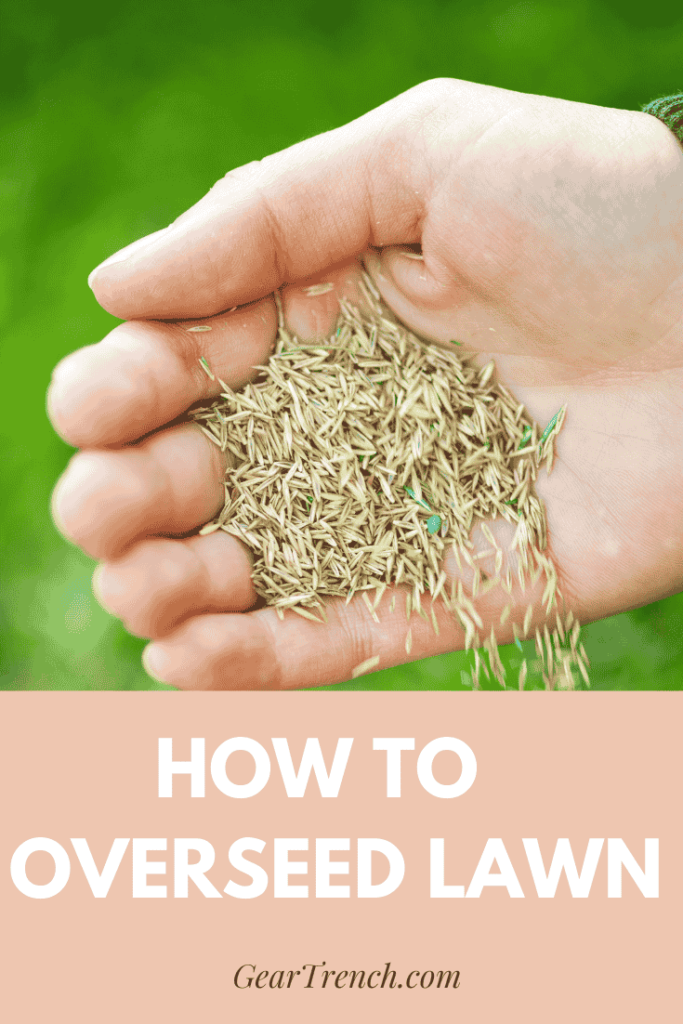
Don’t forget to share this post

